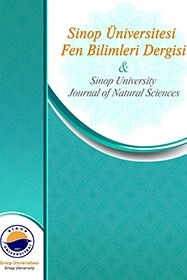Alüminotermik Yöntem Yoluyla Tufalden Ferromolibden Üretimi
Bu çalışmada, bir demir bazlı alaşım olan ferromolibdenin (FeMo) üretimi metalotermik reaksiyon ile gerçekleştirilmiştir. Bu metodun seçilme nedenleri maliyetinin düşük olması, prosesin kısa süre içinde tamamlanması ve enerji ihtiyacının çok düşük olmasıdır. Deneysel çalışmalar öncesinde FactSage ve HSC yazılımları kullanılarak termokimyasal simülasyonlar gerçekleştirilmiştir. Deneylerde başlangıç malzemesi olarak bir atık malzeme olan ve kütlece %70 demir içeren hadde tufali kullanılmıştır. MoO3 molibden kaynağı olarak, alüminyum ise indirgeyici olarak kullanılmıştır. Deneyler sonucunda üretilmiş olan numuneler Atomik Absorbsiyon Spektrometresi (AAS), X-Işını Floresans Spektrometresi (XRF) ve sertlik testleri (micro-Vickers) ile karakterize edilmiştir. Deneysel çalışmalarda öncelikle indirgeyici olarak kullanılan alüminyumun stokiyometrisinin FeMo verimi üzerindeki etkisi araştırılmıştır. XRF sonuçlarına göre, %105 alüminyum stokiyometrisine sahip olan numune hedef alaşıma en yakın sonucu vermiştir. Bu numunede elde edilen Fe verimi %95,16, Mo verimi ise %97,21 olmuştur. Ağırlık değişiminin Fe ve Mo verimleri üzerindeki etkisi %105 alüminyum stokiyometrisine sahip olan numuneler kullanılarak araştırılmıştır. Hedef alaşıma en yakın sonucun 75 gram ağırlığındaki şarj ile elde edildiği görülmüştür. Bu numunedeki Fe verimi %99,10, Mo verimi ise 97,98 olmuştur. Bu numunede elde edilen Fe ve Mo verimleri bütün deneylerde elde edilen en yüksek verim değerleridir. Numunelere yapılan sertlik testlerinde 678 HV10 ve 767 HV10 arasında değerler elde edilmiştir. En yüksek sertlik değeri %100 stokiyometrik alüminyum içeren numune ile elde edilmiştir. Numunelerin kimyasal yapılarının birbirine yakın olması sebebiyle birbirine yakın sertlik değerlerinin elde edildiği sonucuna varılmıştır.
Anahtar Kelimeler:
Hadde Tufali, Ferromolibden, FeMo, Alüminotermik Redüksiyon, Geri Dönüşüm
Production of Ferromolybdenum from Mill Scale via Aluminothermic Process
In this study, the production of ferromolybdenum (FeMo), which is an iron-based alloy, was carried out through the metallothermic reaction. This method was chosen due to its low cost, short process time and minimum energy need. Before the experiments, FactSage and HSC software were used for thermochemical modeling. Mill scale was used as a starting material in the experimental studies. Mill scale is waste material and it contains 70% iron by mass. MoO3 was used as the molybdenum source and aluminum was used as the reducing agent. Produced samples were characterized by Atomic Adsorption Spectrometry (AAS), X-Ray Fluorescence (XRF) and hardness tests (micro-Vickers). Initially, the effect of aluminum stoichiometry, which was used as a reductant, on FeMo efficiency was investigated. The closest result to the target alloy was achieved with the sample having 105% aluminum stoichiometry. Fe and Mo efficiencies were 95.16% and 97.21%, respectively. The effects of weight change on Fe and Mo efficiencies were investigated by using samples having 105% aluminum stoichiometry. It was observed that the closest result to the target alloy was achieved with a 75 g charge. Fe and Mo efficiencies were 99.10% and 97.98%, respectively. These were the highest efficiency values obtained in all experiments. The hardness values of samples were between 678 HV10 and 767 HV10. The highest hardness value was obtained in the alloy containing 100% stoichiometric aluminum. It was concluded that there was no significant difference in the hardness values of the samples due to the similarity in their chemical structures.
Keywords:
Mill Scale, Ferromolybdenum, FeMo, Aluminothermic Reduction, Recycling,
___
- [1] Martin MI, Lopez FA, Torralba JM, 2012. Production of Sponge Iron Powder by Reduction of Rolling Mill Scale, Ironmak Steelmak, 39 (3): 155-162.
- [2] Cho S, Lee J, 2008. Metal Recovery from Stainless Steel Mill Scale by Microwave Heating, Met Mater Int, 14 (2): 193-196.
- [3] Turkiye Celik Ureticileri Dernegi, 2015. Demir Celik Curuf Raporu, Ankara.
- [4] Bantsis G, Sikalidis C, Betsiou M, Yioultsis T, Xenos T, 2011. Electromagnetic Absorption, Reflection and Interference Shielding in X-band Frequency Range of Low Cost Ceramic Building Bricks and Sandwich Type Ceramic Tiles Using Mill Scale Waste as an Admixture, Ceram Int, 37 (8): 3535-3545.
- [5] Murthy YI, 2012. Stabilization of Expansive Soil Using Mill Scale, Int J Eng Sci Technol, 4 (2): 629-632.
- [6] Martin MI, Lopez FA, Alguacil FJ, 2009. Use of By-Products of the Steelmaking Industry for Removing Pb+2 Ions from Aqueous Effluents, 1st Spanish National Conference on Advances in Materials Recycling and Eco-Energy, Madrid, Spain, 34-37.
- [7] Wang Z, Pinson D, Chew S, Monaghan BJ, Pownceby MI, Webster NAS, Rogers H, Zhang G, 2016. Effect of Addition of Mill Scale on Sintering of Iron Ores, Metall Mater Trans B, 47 (5): 2848-2860.
- [8] Azad AM, Kesavan S, Al-Batty S, 2008. Redemption of Microscale Mill Waste into Commercial Nano Scale Asset, Key Eng Mater, 380: 229-255.
- [9] Cardarelli, F, 2000. Materials Handbook: A Concise Desktop Reference. 2nd ed. London: Springer.
- [10] Gasik M, 2013. Handbook of Ferroalloys: Theory and Technology. Oxford: Butterworth Heinemann.
- [11] Voronov YI, Zaiko VP, Zhuchkov VI, 2000. Technology of molybdenum ferroalloys, IMET Euro RAS, Ekaterinburg, Russia, 267.
- [12] Volkert G, Frank KD, 1972. Metallurgie der Ferrolegierungen, 2nd ed. Berlin: Springer-Verlag.
- [13] Gungor MN, Benzesik K, Bugdayci M, Yucel O, 2015. Production of Molybdenum, Nickel, Chromium Containing Iron Based Alloys Via Metallothermic Process, XIV. Infacon: International Ferro-Alloys Congress, Kiev, Ukraine.
- [14] ASTM Standard A132, 2004. "Standard Specification for Ferromolybdenum", West Conshohocken: ASTM International.
- [15] Bugdayci M, Alkan M, Turan A, Yucel O, 2014. Production of Iron Based Alloys from Mill Scale through Metallothermic Reduction, High Temp Mat Pr-Isr, 37(9-10): 889-898.
- ISSN: 2536-4383
- Başlangıç: 2016
- Yayıncı: -
Sayıdaki Diğer Makaleler
Mn+2 katkılı [Mn(acs)2(H20)4] Asesülfam Metal Kompleksinin Epr Spektroskopisi ile İncelenmesi
Mehpeyker KOCAKOÇ, Hasan İÇBUDAK, Recep TAPRAMAZ
Potansiyel Antimikrobiyal Ajanlar Olarak Yeni Asimetrik Schiff Bazlarının Sentezi
Alüminotermik Yöntem Yoluyla Tufalden Ferromolibden Üretimi
Döteron ile İndüklenmiş Uranyum İzotoplarının Tesir Kesiti Hesaplamaları
Runflat Sisteminin Dinamik Analizi
Cihan PAMUK, Ulvi ŞEKER, Ali KALYON
Log-Lineer Modeller ve Kadına Yönelik Şiddet Üzerine Bir Uygulama
